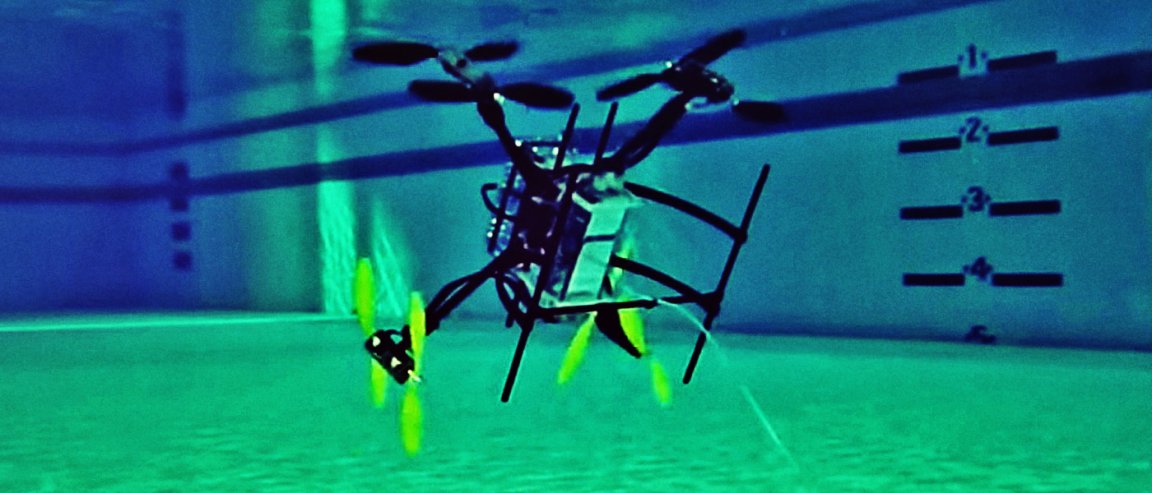
Air and Water
A new prototype drone developed by a team of researchers from John Hopkins University Applied Physics Laboratory (APL) is capable of both flying and swimming. Remarkably, this new 3D-printed design is capable of launching from a fixed position underwater, even from hundreds of meters deeps.
The name may be a little unwieldy (The Corrosion Resistant Aerial Covert Unmanned Nautical System or CRACUNS), but it is lightweight, cheap to build, and is water-pressure resistant. Its internal components are encased in a waterproof chamber while its motors are coated in an anti-corrosive solution to resist saltwater.
Combined, these allow the drone to remain submerged for up to two months.
The project is a joint venture between the APL’s Force Projection Sector and the Research and Exploratory Development Department. Jason Stipes of APL’s Sea Control Mission Area and CRACUNS project manager notes how the drone came about, saying that “engineers at APL have long worked on both Navy submarine systems and autonomous UAVs…In response to evolving sponsor challenges, we were inspired to develop a vehicle that could operate both underwater and in the air.”

Unleash the CRACUNS
Allowing CRACUNS to stay submerged for so long meant overcoming two major obstacles. The first was to fabricate a lightweight, submersible composite airframe what could withstand the pressures of underwater. This is done by taking advantage of the Laboratory’s fabrication facilities with advanced additive manufacturing and novel fabrication techniques.
The second obstacle was to make sure that the drone could operate effectively in an environment of corrosive seawater. This was overcome by sealing the drone’s most sensitive parts in a dry pressure vessel and simply applying protective coatings that were commercially available.
Because of its low-cost build, CRACUNS is even designed to be expendable, making it ideal for use in high-risk missions.